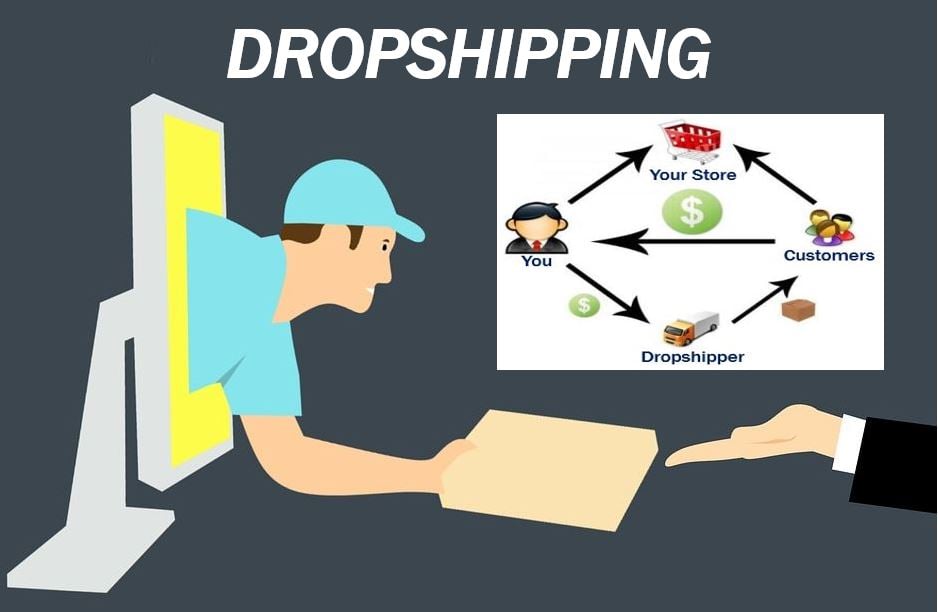A store that uses a dropshipping business model does not keep a stock of the goods it sells. In this supply chain management method, the store passes its customer’s order plus delivery details to a wholesaler, manufacturer, or another retailer, who then delivers the product to the customer.

Writing styles
We can write the term as one or two words, i.e., dropshipping or drop shipping. When writing an article, make sure you are consistent. If you write it as a one-word term, keep doing so for the rest of your text – don’t switch to two words.
In a dropshipping model, the seller never handles the goods it sells directly. The seller does not own inventory. It buys inventory from a third party whenever it needs to, i.e., each time it has a sale.
Amazon, Alibaba, Shopify, and the majority of other online retailers support dropshipping.
Shopify says the following about the term:
“Dropshipping is a retail fulfillment method where a store doesn’t keep the products it sells in stock. Instead, when a store sells a product using the dropshipping model, it purchases the item from a third party, and has it shipped directly to the customer.”
Dropshipping – an attractive business model
Ever since the advent of the Internet near the end of the last century, dropshipping as a business model in the retail sector has become increasingly popular.
Many businesses like it because it does away with the need to have a bricks-and-mortar location. In fact, all you need is an Internet connection, a website, and a laptop.
Some retailers that have a physical location also include dropshipping for some of the items they sell.
A Better Lemonade Stand makes the following comment regarding some retailers:
“Many businesses that do own physical spaces (offices or warehouses) of their own also use drop shipping for some of their goods as it helps free up resources and space for other products.”
Dropshipping pros and cons
Like any business model, this one has several advantages and disadvantages. Let’s look at some of them:
Pros
Very low set up costs – all you need to do is set up a website and find a business that can supply and deliver the goods you plan to sell.
Low running costs – in this type of business, overhead costs are considerably lower than a store with premises, stocks, etc.
Focus – as you don’t have to worry about logistics, you can concentrate on other parts of the business such as marketing. Logistics involves planning and coordinating the flow of materials and data, from purchasing raw materials to delivering to customers. It is a subset of supply chain management.
In a previous Market Business News article, we made the following comment:
“Integrating your eCommerce solution with a dropshipping platform ultimately makes your life much easier, since it allows you to focus on other, more important business tasks, like growing your customer base and fielding customer service inquiries that aren’t related to shipments or orders.”
Testing – with a dropshipping model, you can experiment, i.e., determine whether the market for a specific product is ready for it before committing yourself.
Location – as long as you have a laptop and Internet connection, you can run your business from anywhere in the world.
Expansion – if your supplier can continue meeting rising demand, your business can grow fast without having to invest heavily.
Cons
Risk & Liability – you have to depend on a third party to deliver the goods you sell on time and in good condition. As your customers bought from you, any mistakes the supplier makes affect your brand image. Depending on the arrangement you have with the supplier, you may also be liable if they mess things up.
Profit margins – your margins will be lower compared to a retailer who keeps a stock of goods and delivers to customers.
Competitors – dropshipping has become extremely popular and is still growing fast. You are likely to be competing with several companies.
Personalization – there is not much you can do to target your customers in a more personal way when the goods are delivered. Some suppliers may be willing to package goods according to your instructions or preferences. However, you will probably have to pay for the service, which will eat into your profit margins.
